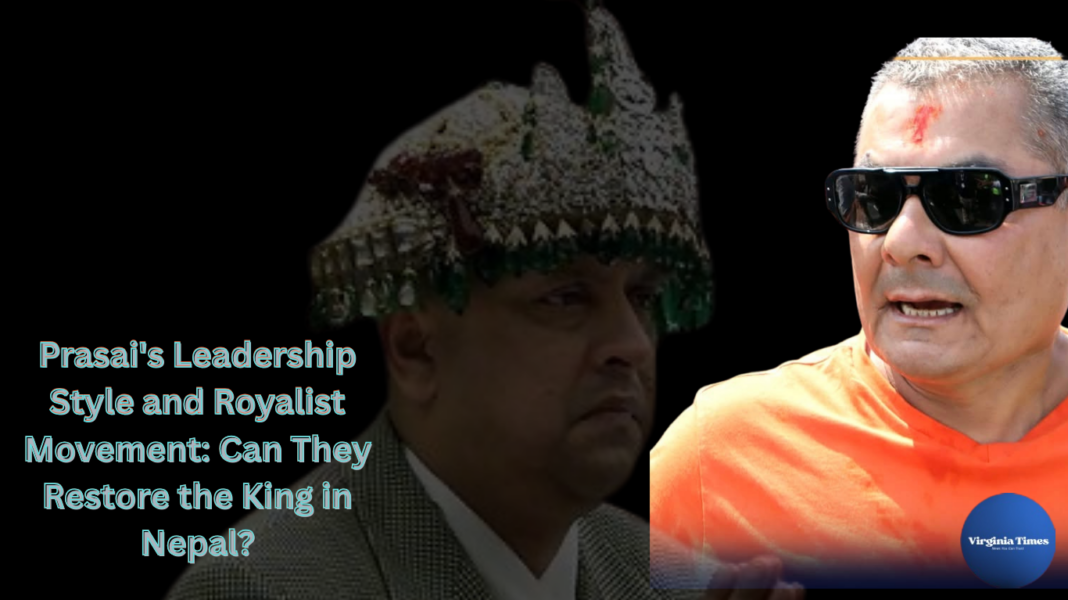Kathmandu witnessed violent royalist protests last Friday in the Thapathali area, leading to the tragic deaths of two individuals and injuries to dozens. The incident has sent shockwaves through the nation’s political landscape. The protest, led by Durga Prasai, has become a hot topic due to his aggressive leadership style.
Amidst the turmoil, Prasai was seen driving his own vehicle and breaking through security barriers , urging supporters with slogans like “Aawo-Aawo” (Come, Come). His provocative actions have become a hot topic of discussion. In a video message released on Sunday, he claimed he was not in hiding but was safely residing in a temple in Kathmandu.
Meanwhile, the Kathmandu Metropolitan City has fined former King Gyanendra Shah nearly eight lakh rupees for damages and waste management caused during the protests. The royalist movement’s primary political backer, the Rastriya Prajatantra Party (RPP), has strongly condemned the government’s actions, accusing it of suppressing the movement. Analysts argue that while the government blames Prasai for the violence, the culture of violent protests was initially established by major parties like the Nepali Congress, UML, and Maoists.
Public Reactions
The nature of the protest has sparked fear and uncertainty among ordinary citizens. Clashes between police and protesters, instances of arson, and vandalism have raised security concerns in Kathmandu. Authorities had to impose a curfew as tear gas and water cannons failed to control the escalating situation. Protesters attacked party offices, media houses, and private properties, further intensifying public anxiety.
While the government holds Prasai responsible, many Nepalese remember that violent protests have been a common political tool used by mainstream parties. The fine imposed on the former king has surprised many, as Gyanendra Shah remained silent and uninvolved in the events. The RPP’s attempt to pressure the government by disrupting parliament has only added to concerns about instability.
Political Analysts’ Perspectives
Experts believe the protests highlight the weaknesses of Nepal’s republican system. In less than two decades, Nepal has seen 13 different governments, fostering political instability and corruption, leading to widespread public dissatisfaction. The movement under Prasai appears to be reviving nostalgia for Nepal’s Hindu monarchy.
Despite RPP winning 14 seats in the 2022 elections, royalist ideology remains a minority stance. Major political parties—Congress, UML, and Maoists—remain united against the monarchy, making constitutional amendments to reinstate the king nearly impossible. Furthermore, the aggressive approach of the movement may alienate moderate supporters.
While the government’s crackdown could fuel further unrest, the Kathmandu Metropolitan City’s decision to penalize the former king has unexpectedly drawn him into the controversy, despite his passive stance. The leadership crisis within the royalist movement also raises questions about its sustainability.
Future Scenarios
Two possible scenarios could unfold:
- If the government fails to address governance issues, public dissatisfaction will grow, potentially strengthening the royalist movement and leading to demands for a referendum.
- If protests become increasingly violent and chaotic, they may lose credibility and eventually fade away.
Given the current political landscape, with republic-supporting parties firmly in control and royalist sentiment still a minority, a major shift in Nepal’s governance structure seems unlikely. However, the movement could pressure the government to implement reforms.
Conclusion
The protests have both challenged Nepal’s republican system and highlighted the limitations of the royalist movement. For the general public, the movement has created a mix of hope and fear, while analysts see it as a test for Nepal’s political future. Whether it leads to meaningful change depends on how both the government and the royalist movement navigate the evolving situation.
A global media for the latest news, entertainment, music fashion, and more.





